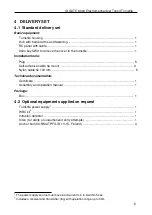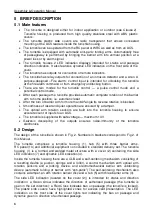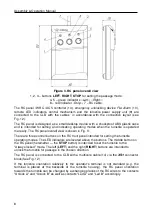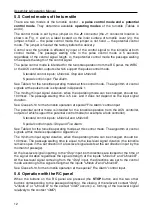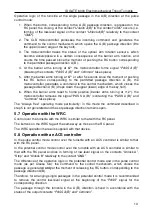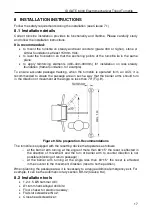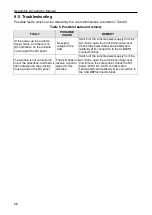
Assembly & Operation Manual
12
5.5 Control modes of the turnstile
There are two modes of the turnstile control -
a pulse control mode and a potential
control mode
. They determine available
operating modes
of the turnstile (Tables 3
and 4).
The control mode is set by the jumper on the
J1
connector (the J1 connector location is
shown on Fig. 4 and on a label located on the inner surface of turnstile cover (2)): the
jumper is fixed
—
the pulse control mode, the jumper is not fixed
—
the potential control
mode. The jumper is fixed at the factory before the delivery.
Control over the turnstile is effected by input of the control signal to the turnstile at both
control modes. The passage waiting time in the pulse control mode is 5 seconds
regardless of the control signal length. In the potential control mode the passage waiting
time equals the length of the control signal.
The pulse control mode is intended for the turnstile operation from the RC panel, the WRC
or the ACS controller, outputs of which support the pulse control mode.
Standard control inputs:
Unlock
A,
Stop
and
Unlock B
.
Special control input:
Fire Alarm
.
See Table 3 for the turnstile operating modes at this control mode. The algorithm of control
signals at the pulse mode is stipulated in Appendix 1.
The minimum input signal duration, when the operating mode can be changed, should be
100msec. The passage waiting time is 5 sec. and it does not depend on the input signal
duration.
See Clause 5.10 for the turnstile operation at s
pecial “Fire Alarm” control input.
The potential control mode is intended for the turnstile operation from the ACS controller,
outputs of which support the potential control mode (for example, a lock controller).
Standard control inputs:
Unlock A
and
Unlock B
.
Special control inputs:
Stop
and
Fire Alarm
.
See Table 4 for the turnstile operating modes at this control mode. The algorithm of control
signals at this mode is stipulated in Appendix 2.
The minimum input signal duration, when the operating mode can be changed, should be
100msec. The passage waiting time is equal to the low-level signal duration (the turnstile
remains open in the set direction if a low-level signal exists at the set direction input by the
moment of passage).
At the low-level signal inputting to the
“
Stop
”
input, both directions are locked for the time of
the signal duration regardless the signal strength at the
inputs “
Unlock A
”
and
“
Unlock B
”.
At the low-level signal removing from the
“
Stop
”
input, the directions are set to the control
mode according to the signal strength at the inputs
“
Unlock A
”
and
“
Unlock B
”.
See Clause 5.10.for the turnstile operation at
the special “Fire Alarm” control input.
5.6 Operation with the RC panel
When the buttons on the RC panel are pressed (the
STOP
button and the two other
buttons corresponding to the passage direction), the closing of the relevant contact
“
Stop
”,
“
Unlock A
”
or
“
Unlock B
”
to the contact
“
GND
”
occurs (i.e. forming of the low-level signal
relatively to the contact
“
GND
”).





